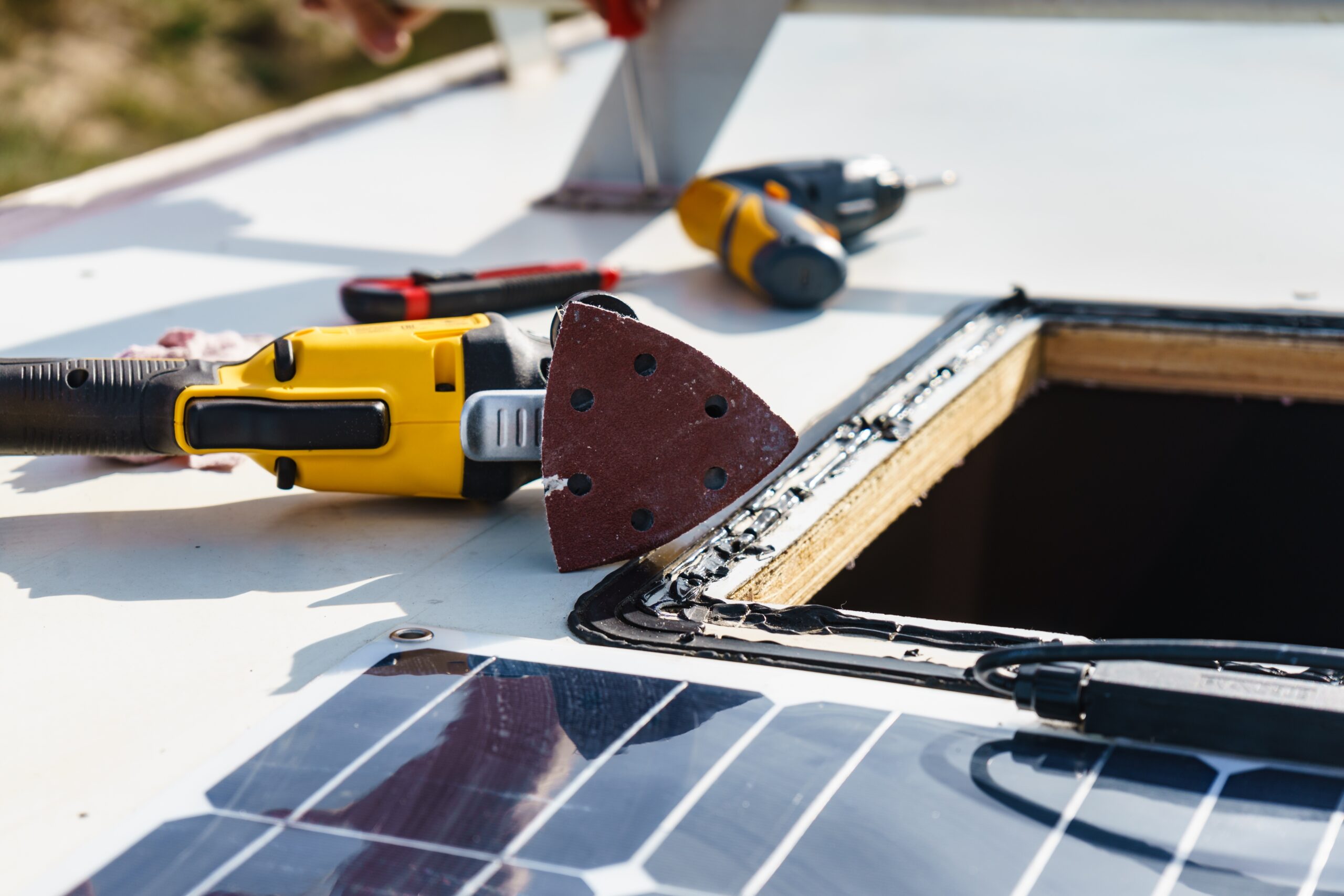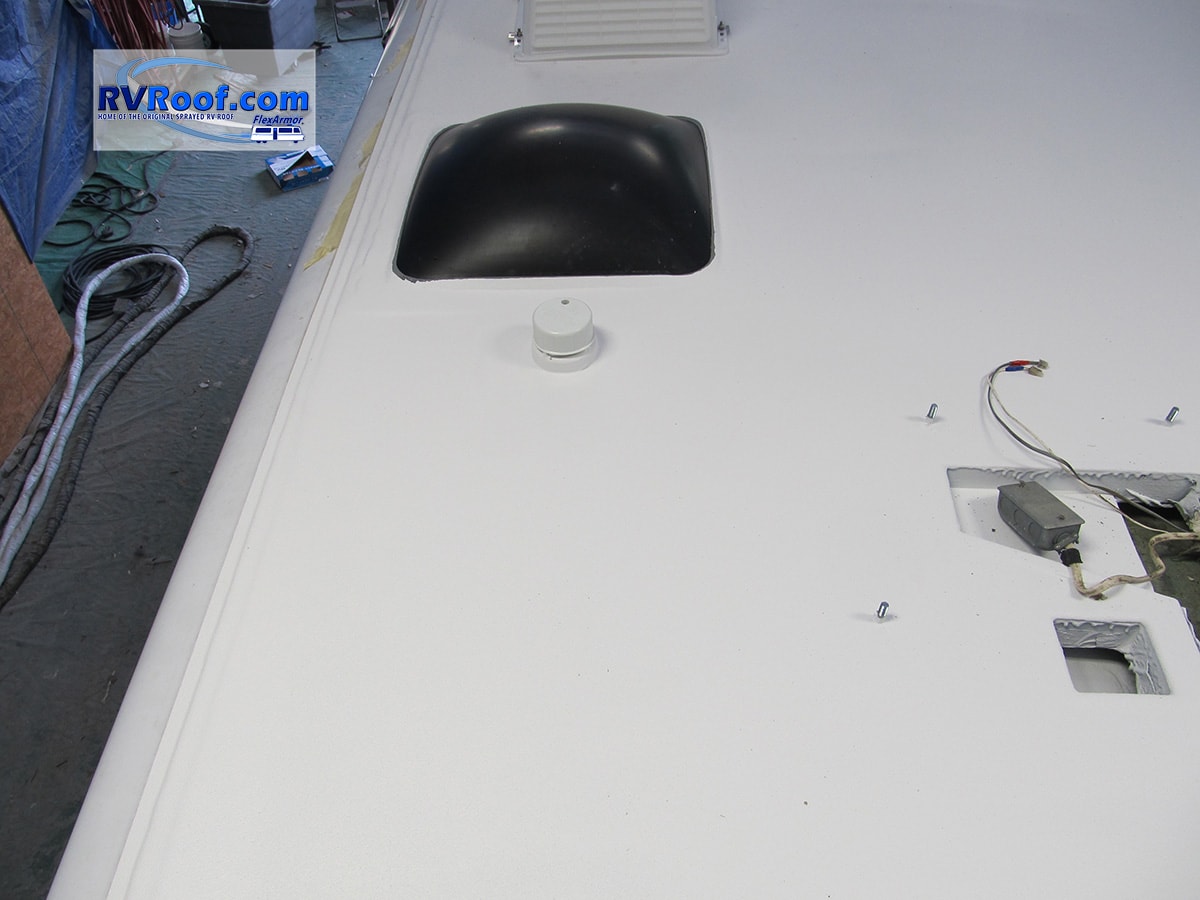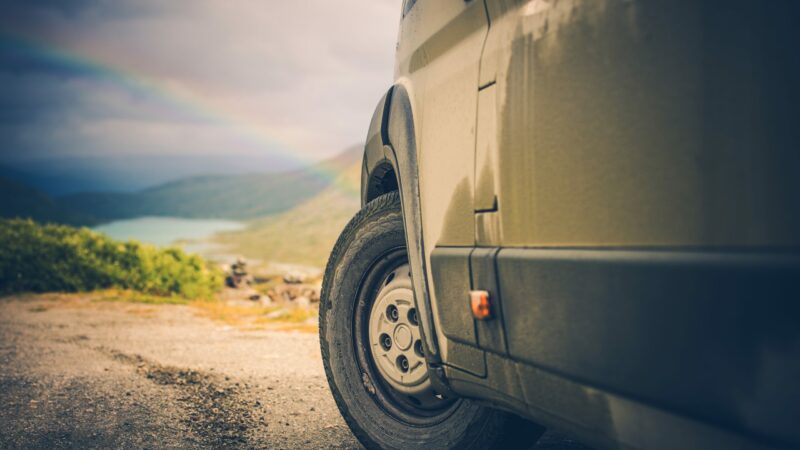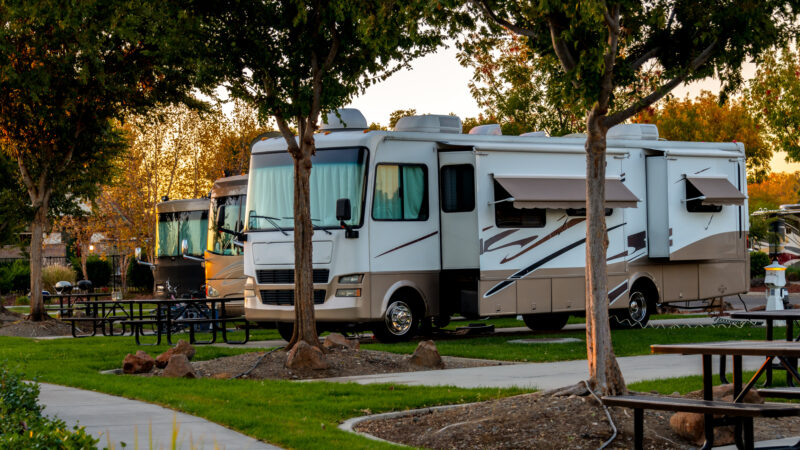Facing That Moment of Roof | I Heart RVing
signs to make repairing or replacing your RV roof a top priority.
By Jennifer Adair
Let’s all agree on a universal truth: RVing gives adventure a whole new ceiling. Our RVs transport us to nature’s grandest backyards and still give us the comfort of home. Chief among those comforts is having a roof over our heads. So, when we start to see signs that our RV roof may need maintenance, it can be a real downer. We may not want to see what we see. (That’s denial.)
But if we want to keep enjoying our RV (we do), we need to accept a hard truth: Repairing or replacing our roof is key in preventing costly water leaks and damages. Fortunately, you can restore your roof integrity and all the fun that comes with it. You may even end up with a far better roof. (More on that in a bit.) So, be encouraged. No matter what you might hear from Jack
Nicholson, you can handle the roof. And here’s how.
4 Signs to Look For
What color changes, cracks, caulking, and wrinkles might mean.
If you want your RV to stand the test of time, it’s essential to catch potential roof issues early. So keep an eye out for these signs. Regular inspections (before and after trips) help you catch problems early because you will be able to spot changes in how your roof looks or feels. Visually, the roof should be smooth and lay flat. There should be no cracks or tears in the roofing material. If you have an EPDM (ethylene propylene diene monomer) rubber roof, it should be white. The roof material is half white and half black. Once the white wears away from UV exposure and time, you’ll see the black. And that is a visual indicator you need to replace the roof.
TPO (thermoplastic polyolefin) or vinyl roofs should also lay flat. Wrinkles (due to the way this roof type is adhered) usually indicate water intrusion. The cotton backing of these roofs soak in water and hold it in, which can lead to wood rot in a short period. While some wrinkles from stretching are common in both types of roofs, they will usually be in a straight line along the plywood. Fiberglass roofs should be inspected for small spider cracks in the surface. As the gel coat deteriorates, the fiberglass is exposed and will start to crack. If you notice white streaks on your sides, this is usually from the gel coat deteriorating.
Ultimately, though, the No. 1 offender of water damage in an RV roof is bad caulking. You should inspect this regularly for cracks. Once it dries out and cracks, you are just waiting for a leak.
Self-leveling sealant (the most common one made by Dicor and compatible with EPDM) stays soft and supple. Regular inspection is the best way to find and address problems early before it results in a costly repair.


Factors to Consider
Finding out just how bad your RV roof really is. When dealing with RV roof problems, start by gauging the extent of the damage. If you notice only chalking and the overall condition of
your roof is good, a rubber conditioner or silicon coating can effectively fix the problem and prolong the lifespan of your roof’s membrane. However, if water has infiltrated the roof, quick
action is needed to prevent further damage. To ensure the long-term health of your RV, take note of any holes in the rubber, as they play an important role in deciding the next steps for comprehensive roof maintenance. Luckily, there are several options to consider when dealing with a leaky RV roof.
Weighing Your Options
Products for roof repair and your the best option for replacement.
For minor issues (especially if you are a do-it-yourselfer), a rolled-on silicon or rubber coating can safely preserve the existing material. Liquid Rubber, Hengs, and other rolled-on options can be found at your local RV store. Before patching small membrane holes using products like EternaBond tape, make sure the wood underneath is dry before application.
However, larger holes or soft spots call for a comprehensive roof replacement to address the problem properly and prevent larger issues down the road. When it comes to replacing the roof membrane, the common approach is swapping it with the same type at any RV service center or dealership.
However, this method may not fully eliminate all of your membrane concerns. Another option is aftermarket installations, usually done more carefully than factory installs. But, they might take longer, causing a costly delay. The truth is that all this trouble might have you looking for a permanent solution, and in that category, none can match a sprayed-on RV roof.


Enjoy an Even Better Roof
Spray-on roofing means no leaks for a lifetime.
A sprayed-on RV roof, like FlexArmor, is made to address the common issues with standard RV roof options. FlexArmor was designed to remove the caulking seams and provide unparalleled durability, superior insulation, and maximum impact protection, ensuring your RV roof stands the test of time. Plus, FlexArmor RV roofs stick to your RV to create a strong seal that lasts a lifetime. That means no leaks. Ever. Guaranteed.


At FlexArmor, our goal is to offer the best RV roofing solution in a crowded market, and we’ve been doing so successfully for over 16 years. Our commitment revolves around three simple principles: no leaks, no maintenance, no worries. FlexArmor stands out as an aftermarket option because it provides a seamless RV roof with no caulking, unlike other standard RV roof options. FlexArmor roofs are also typically three times thicker and stronger. This means better insulation and more protection from bumps and knocks. When you have a monolithic roof with no seams to maintain, you eliminate a major worry.
How does FlexArmor do it? Unique bonding techniques that stick well to all sorts of materials on RV roofs, forming the basis for our lifetime, transferable, no-leak guarantee. We’re confident these bonds won’t weaken even after years of travel. Since every RV roof is different, we customize our process to fit various situations. Whether it’s a quick two-and-a-half-day appointment or a straightforward one-page warranty, FlexArmor isn’t just a roof solution; it’s a reliable promise for worry-free RV journeys. So you can always trust the roof over your head, wherever adventure takes you. Get Your Free FlexArmor Sample at RVRoof.com. You can see the thickness and durability for yourself.






